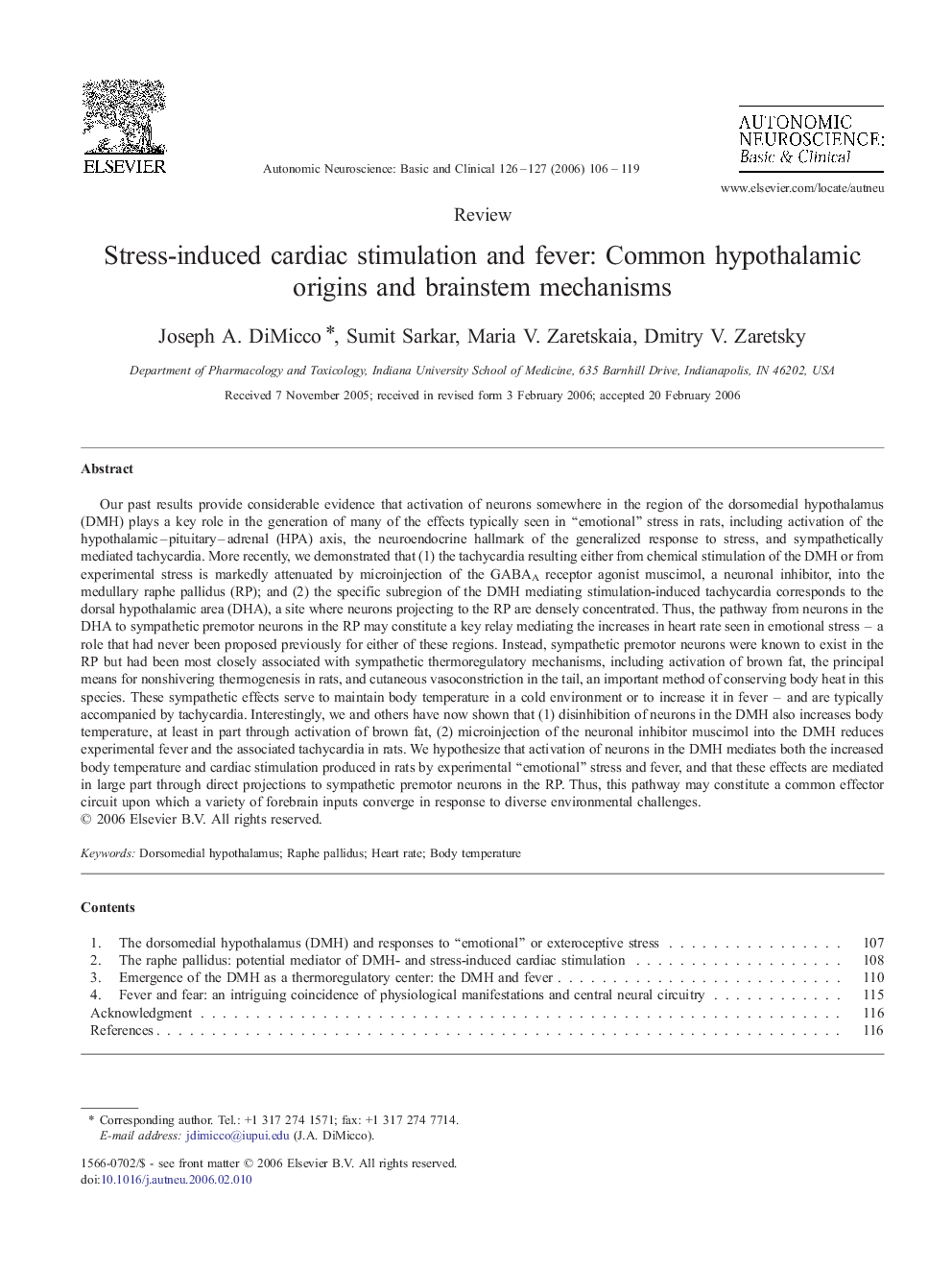| کد مقاله | کد نشریه | سال انتشار | مقاله انگلیسی | نسخه تمام متن |
|---|---|---|---|---|
| 3035844 | 1579583 | 2006 | 14 صفحه PDF | دانلود رایگان |

Our past results provide considerable evidence that activation of neurons somewhere in the region of the dorsomedial hypothalamus (DMH) plays a key role in the generation of many of the effects typically seen in “emotional” stress in rats, including activation of the hypothalamic–pituitary–adrenal (HPA) axis, the neuroendocrine hallmark of the generalized response to stress, and sympathetically mediated tachycardia. More recently, we demonstrated that (1) the tachycardia resulting either from chemical stimulation of the DMH or from experimental stress is markedly attenuated by microinjection of the GABAA receptor agonist muscimol, a neuronal inhibitor, into the medullary raphe pallidus (RP); and (2) the specific subregion of the DMH mediating stimulation-induced tachycardia corresponds to the dorsal hypothalamic area (DHA), a site where neurons projecting to the RP are densely concentrated. Thus, the pathway from neurons in the DHA to sympathetic premotor neurons in the RP may constitute a key relay mediating the increases in heart rate seen in emotional stress – a role that had never been proposed previously for either of these regions. Instead, sympathetic premotor neurons were known to exist in the RP but had been most closely associated with sympathetic thermoregulatory mechanisms, including activation of brown fat, the principal means for nonshivering thermogenesis in rats, and cutaneous vasoconstriction in the tail, an important method of conserving body heat in this species. These sympathetic effects serve to maintain body temperature in a cold environment or to increase it in fever – and are typically accompanied by tachycardia. Interestingly, we and others have now shown that (1) disinhibition of neurons in the DMH also increases body temperature, at least in part through activation of brown fat, (2) microinjection of the neuronal inhibitor muscimol into the DMH reduces experimental fever and the associated tachycardia in rats. We hypothesize that activation of neurons in the DMH mediates both the increased body temperature and cardiac stimulation produced in rats by experimental “emotional” stress and fever, and that these effects are mediated in large part through direct projections to sympathetic premotor neurons in the RP. Thus, this pathway may constitute a common effector circuit upon which a variety of forebrain inputs converge in response to diverse environmental challenges.
Journal: Autonomic Neuroscience - Volumes 126–127, 30 June 2006, Pages 106–119